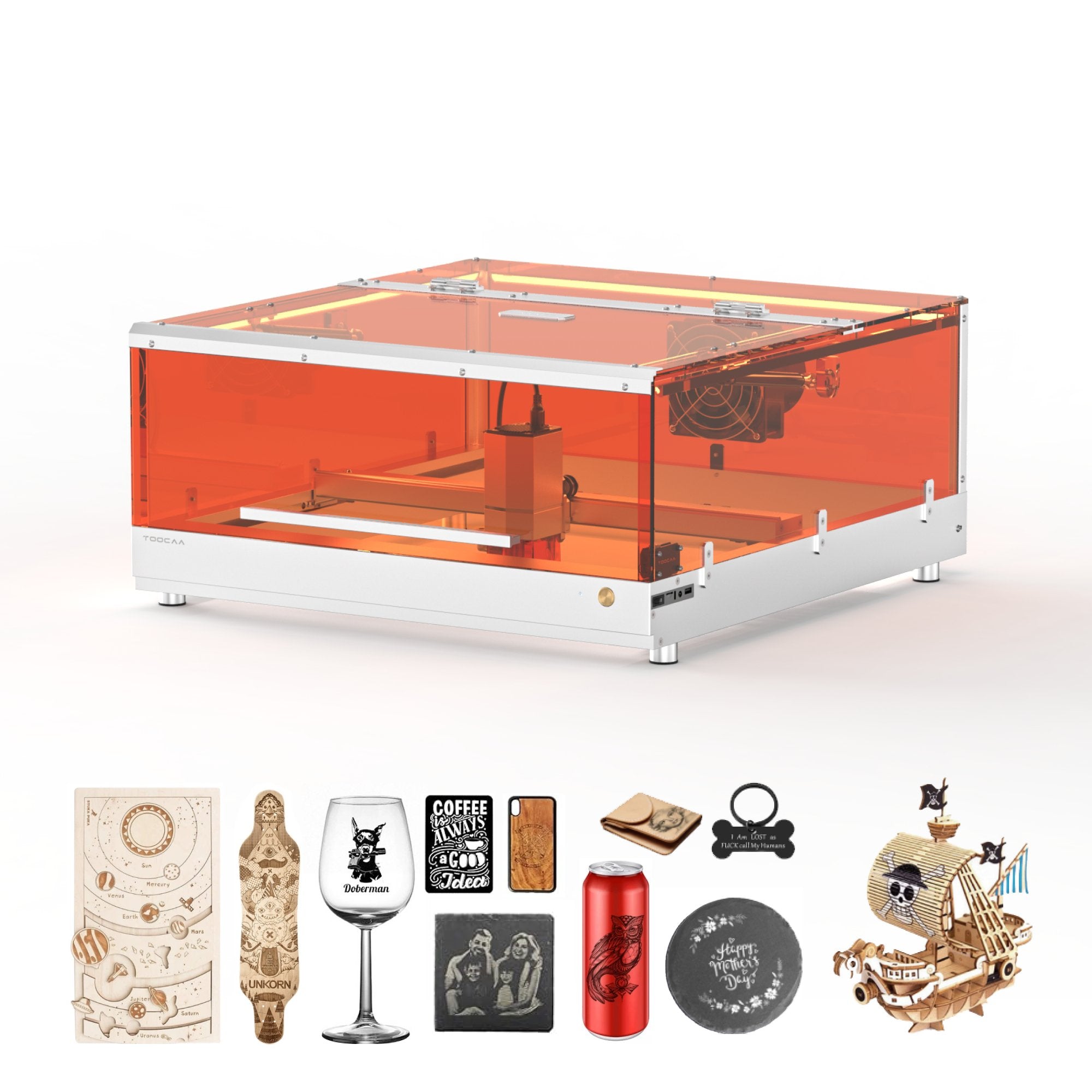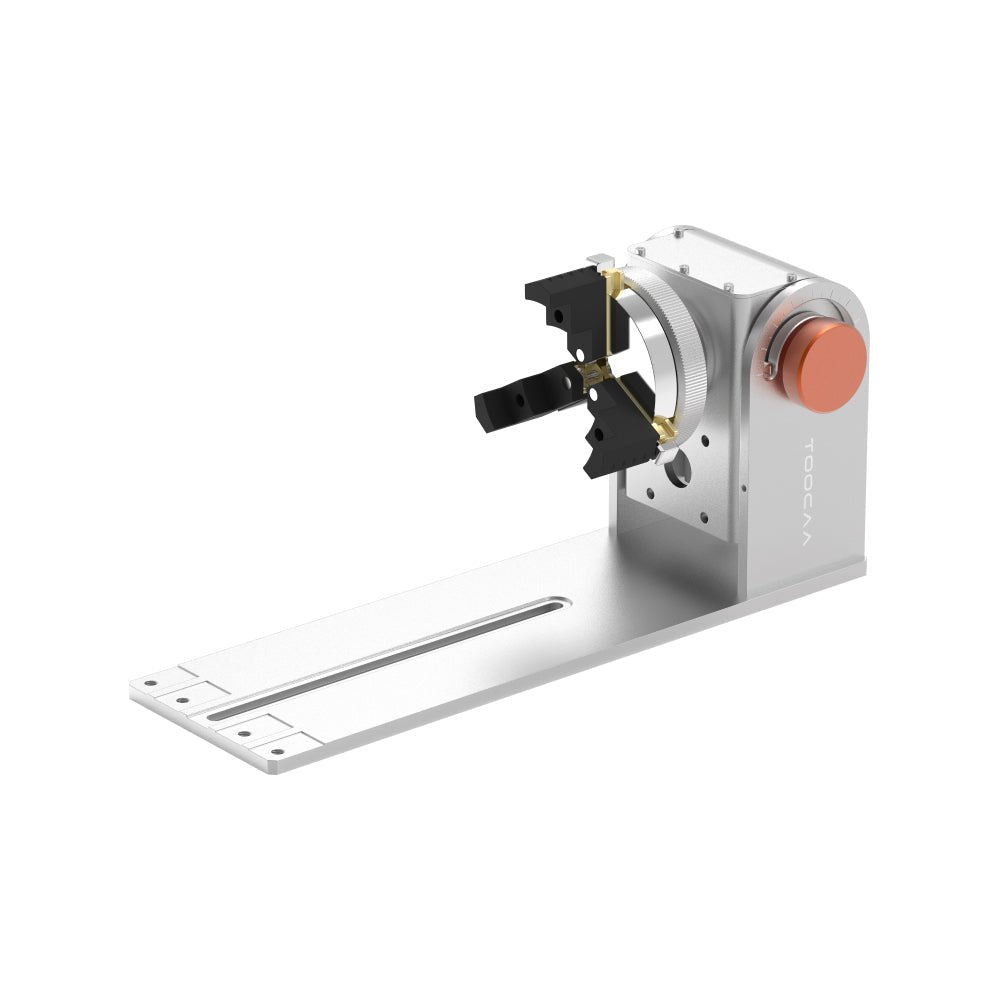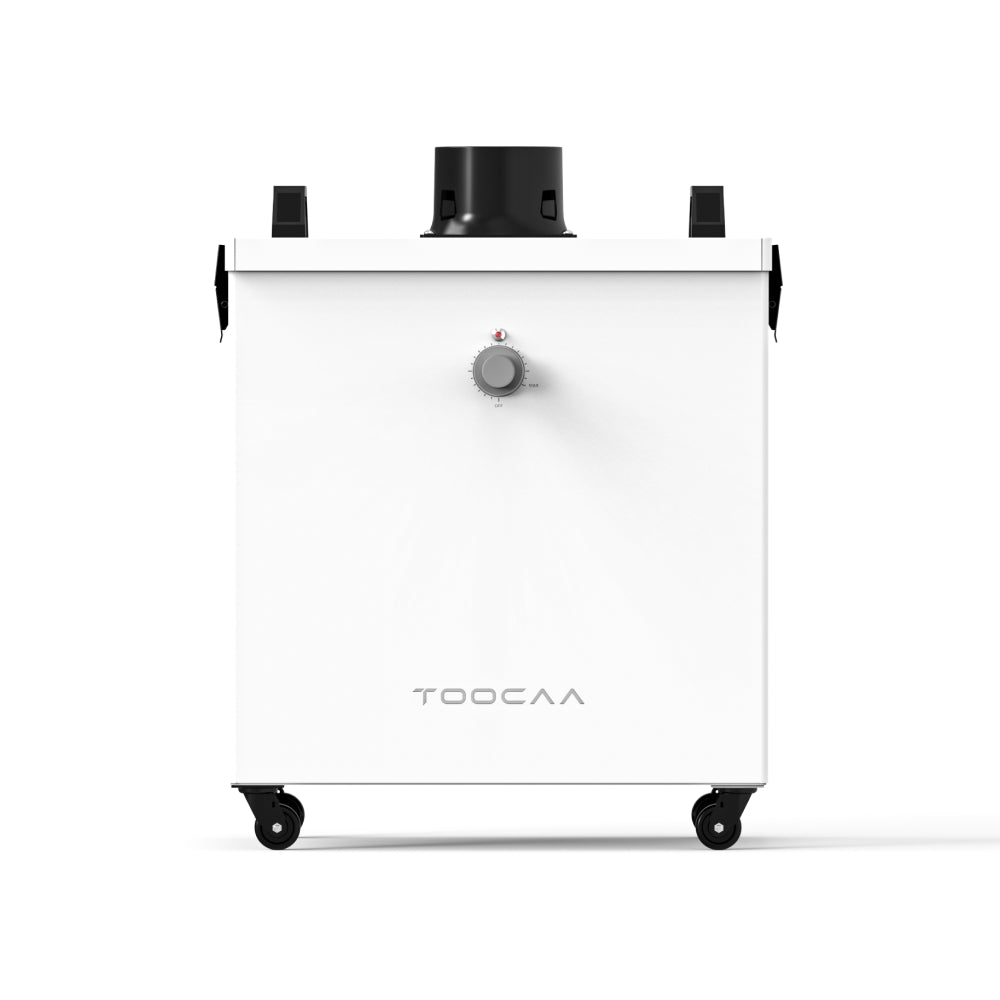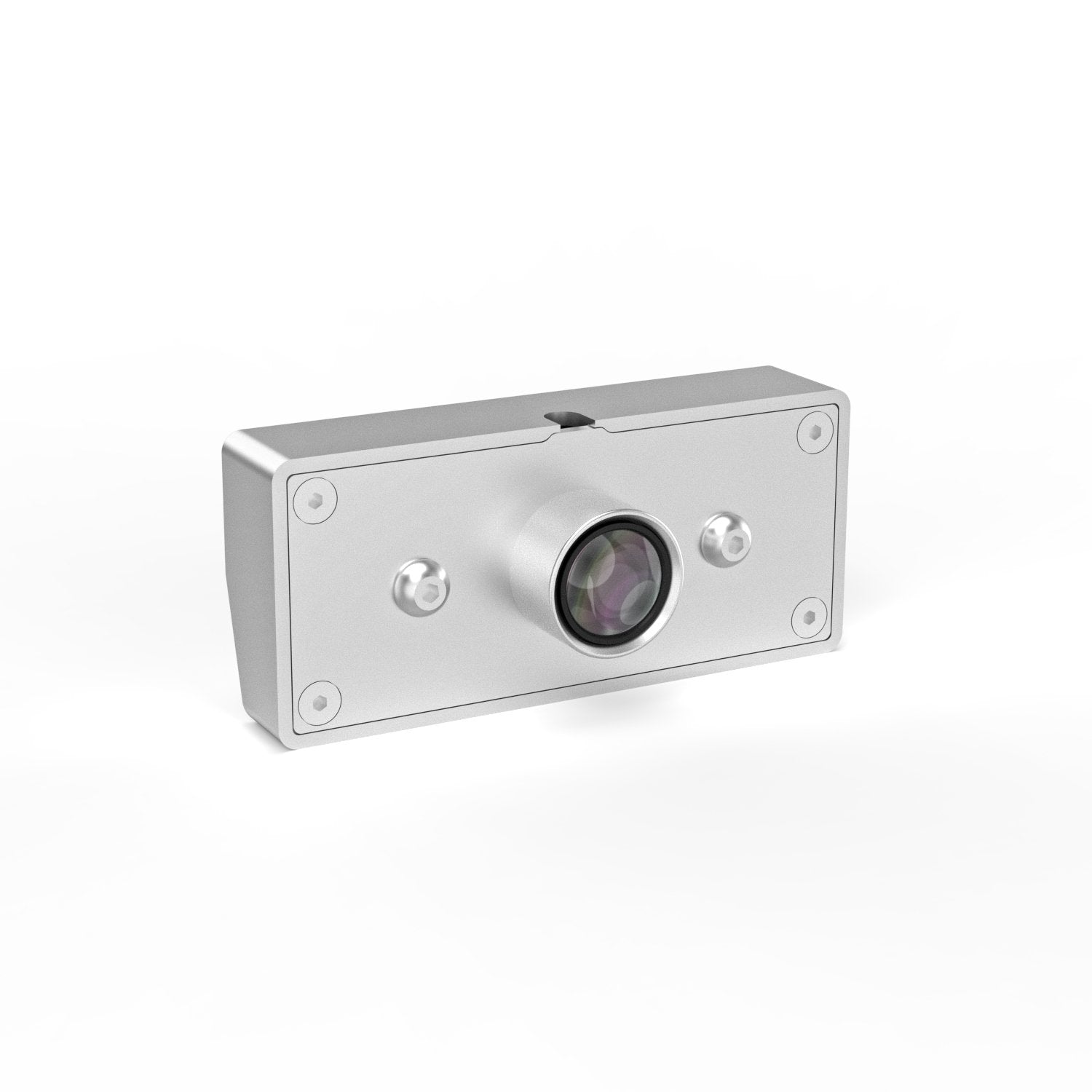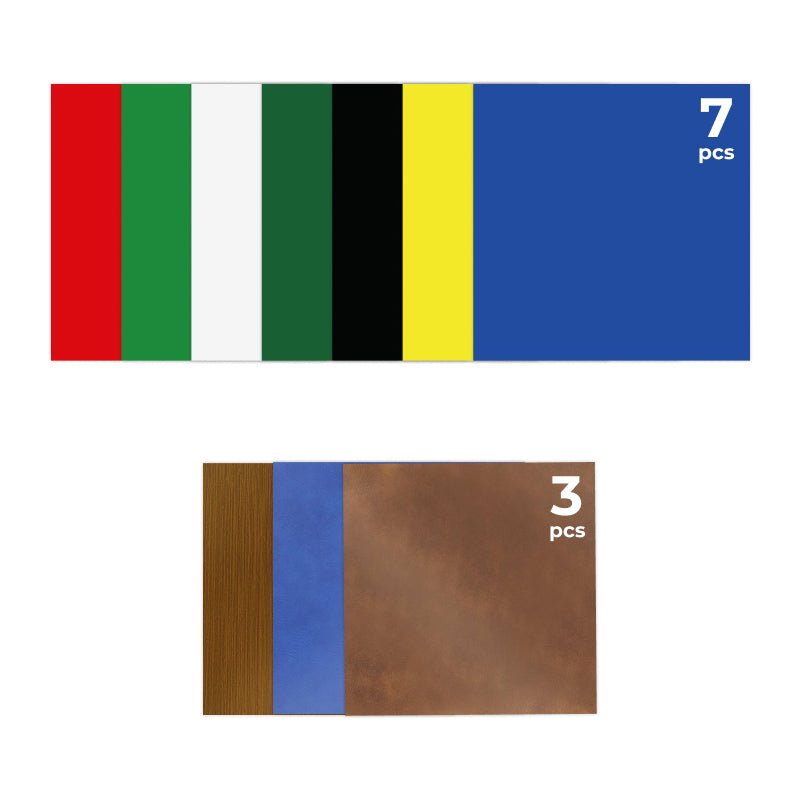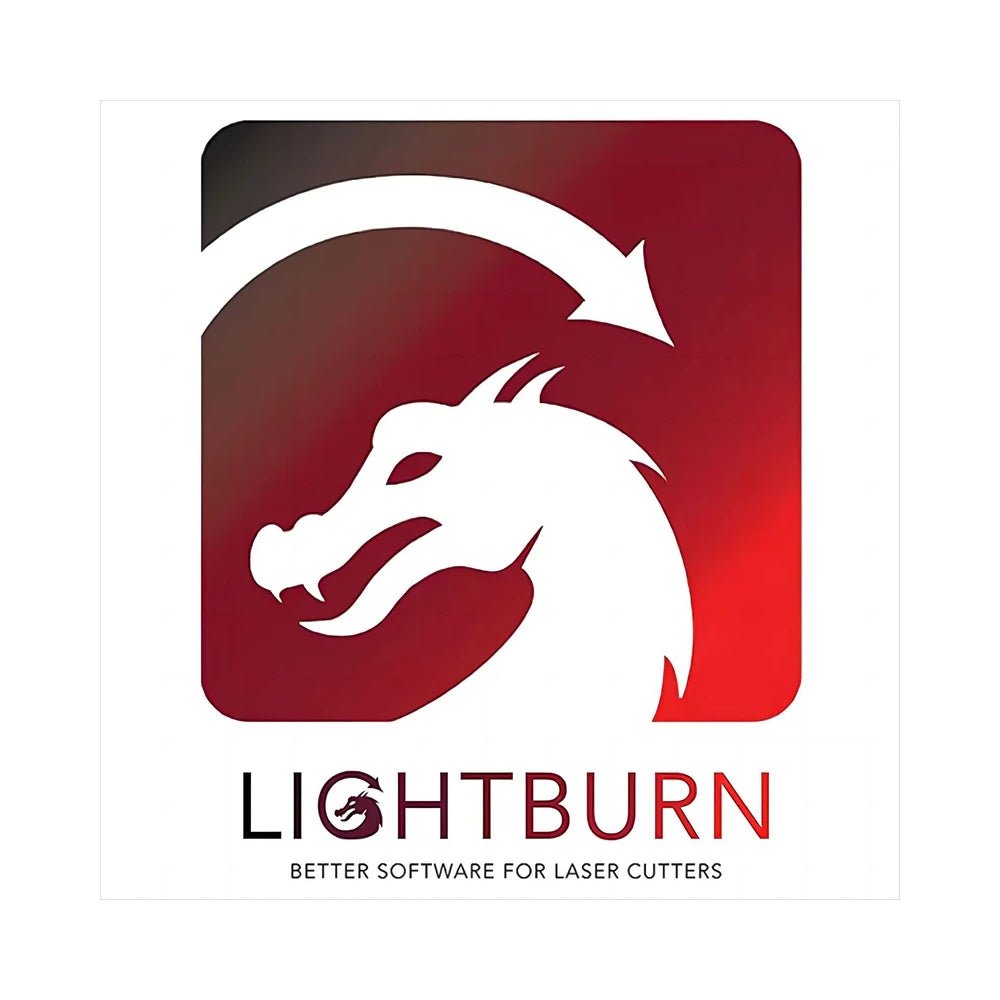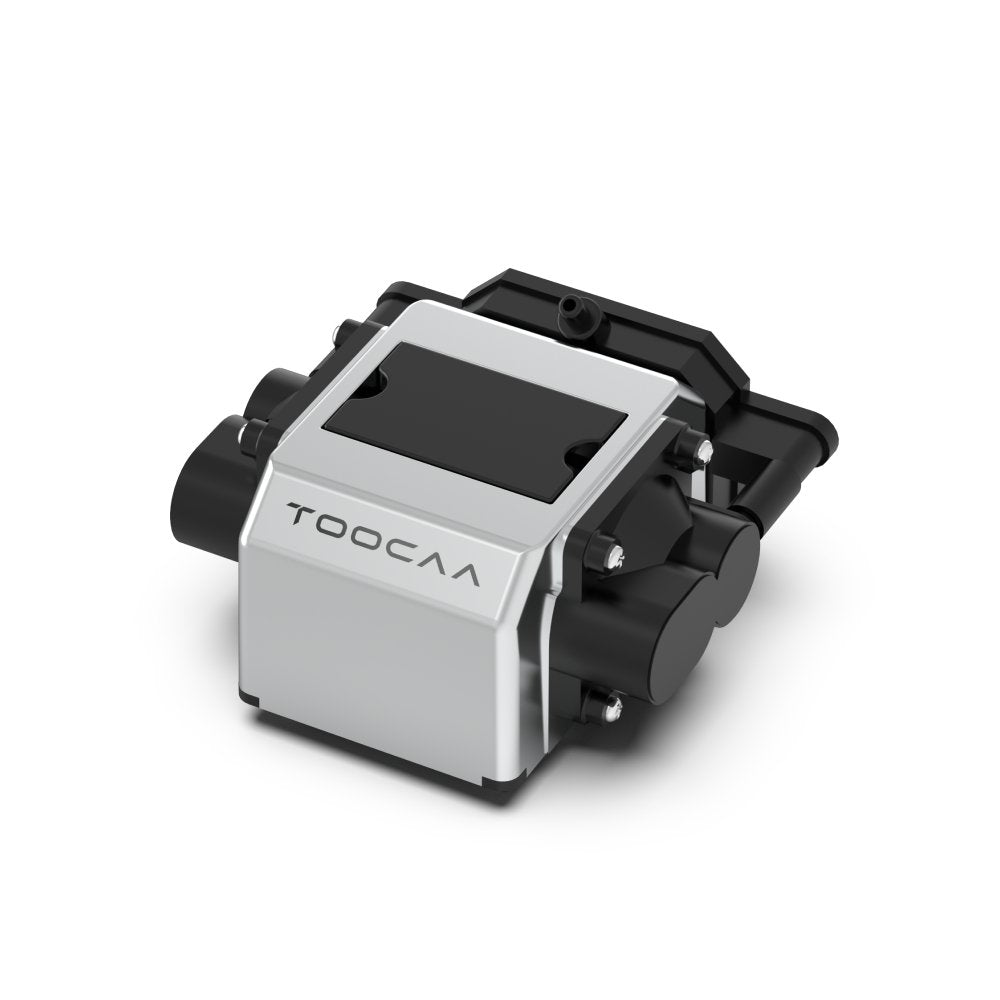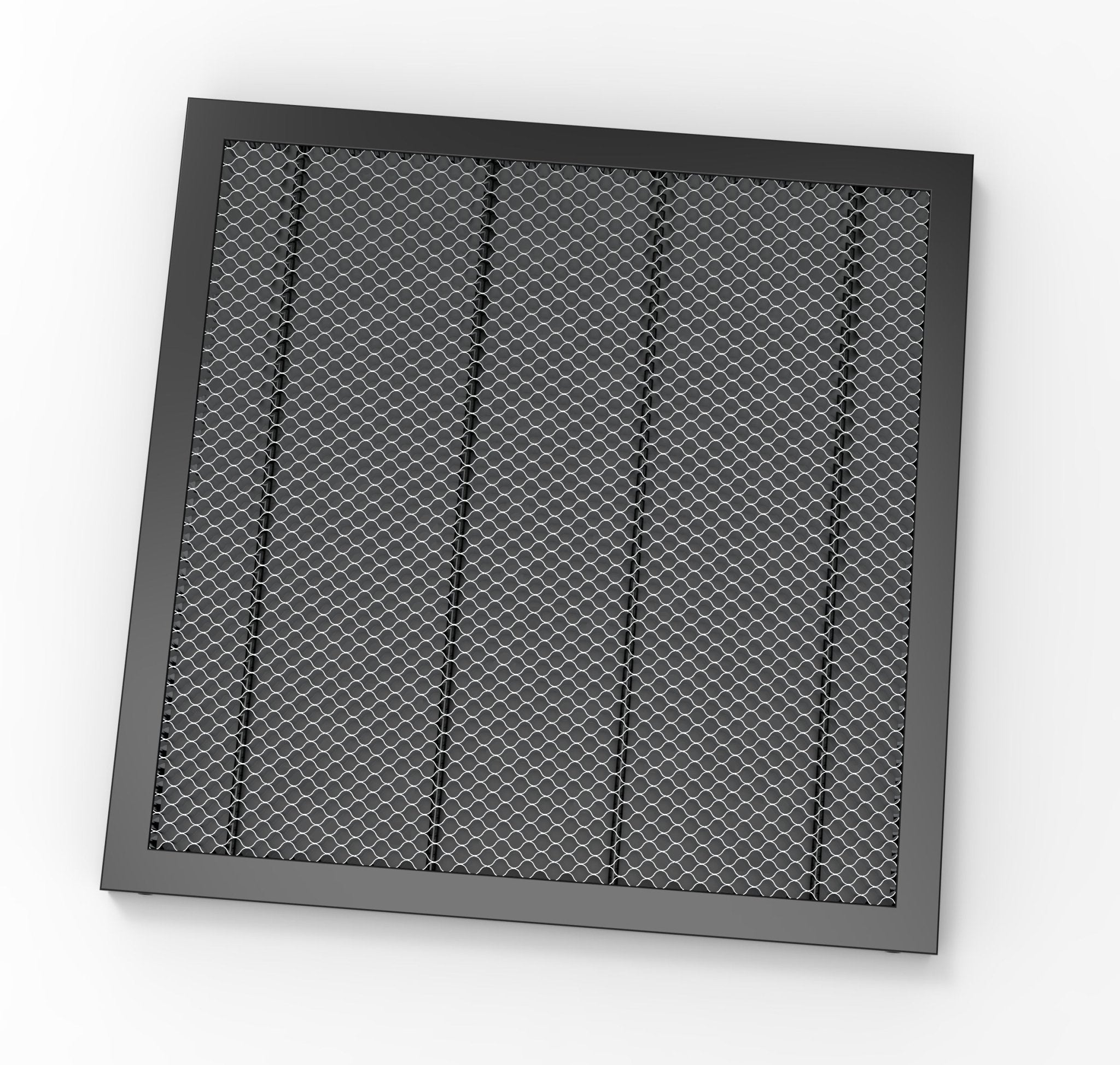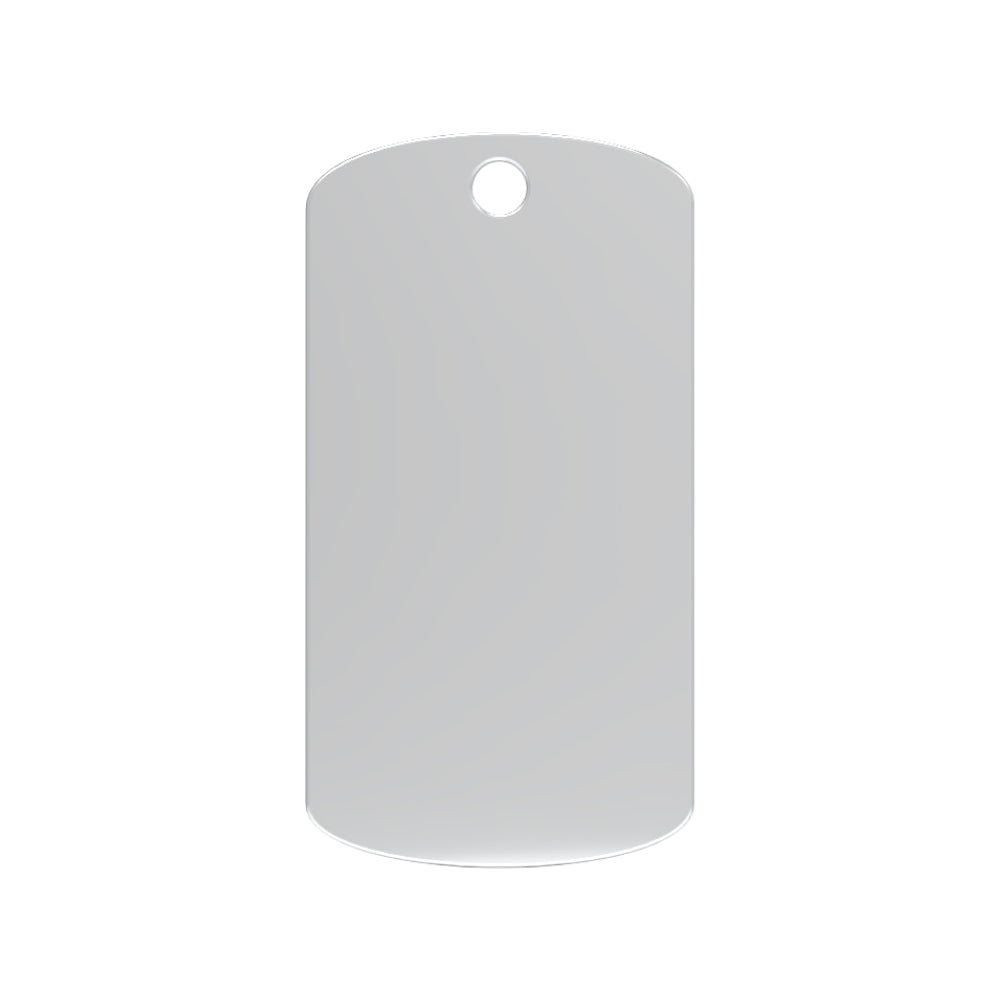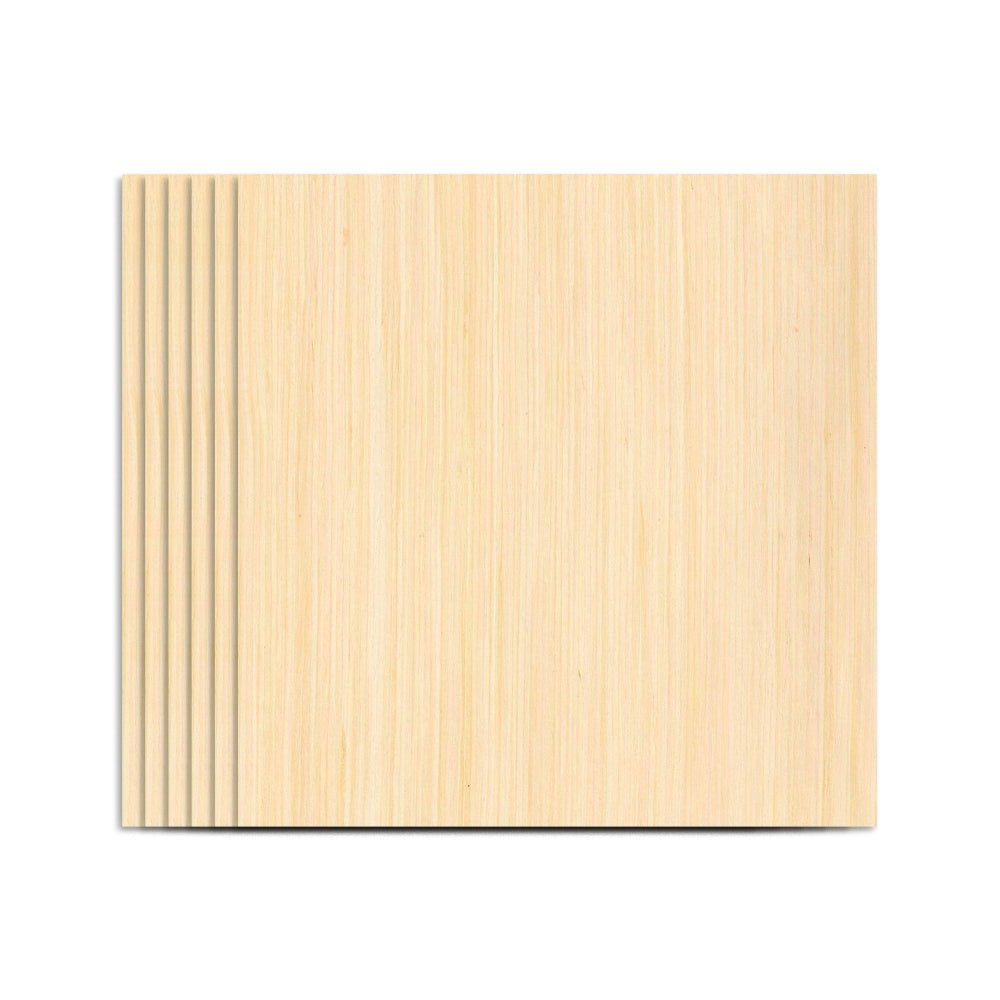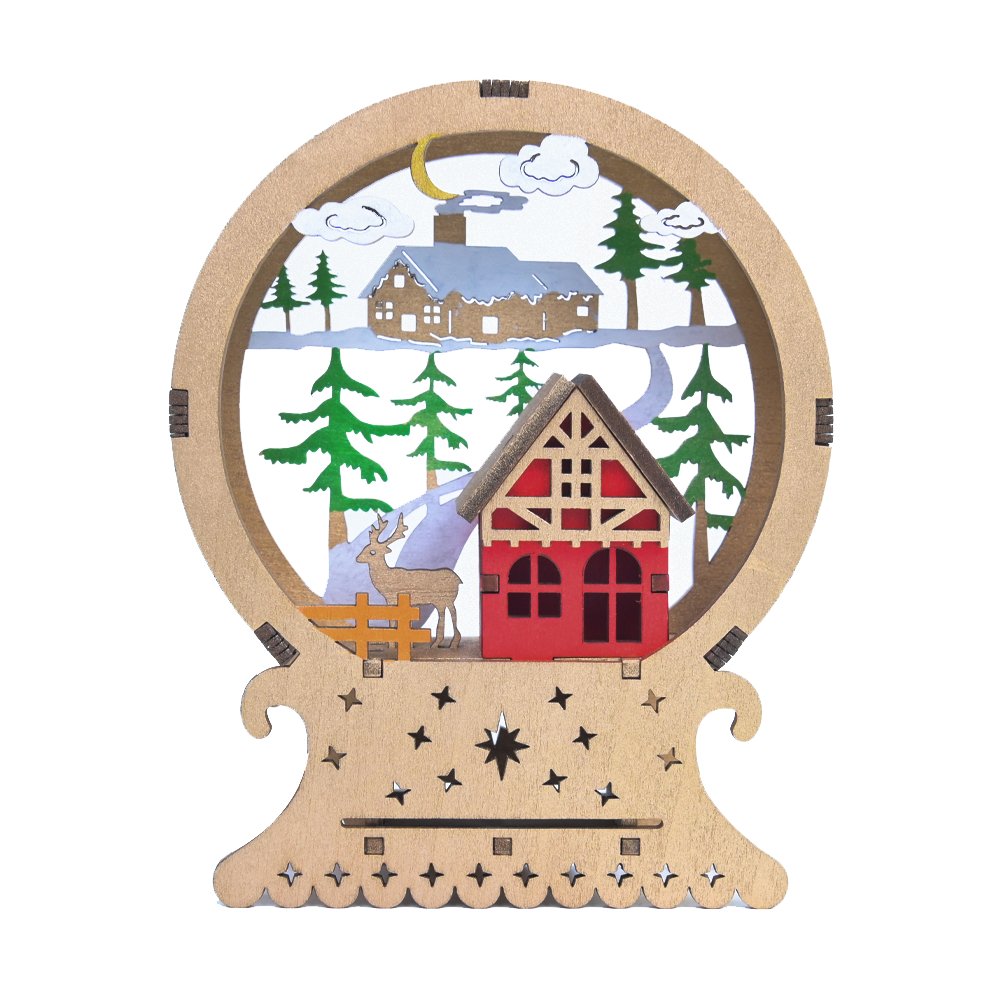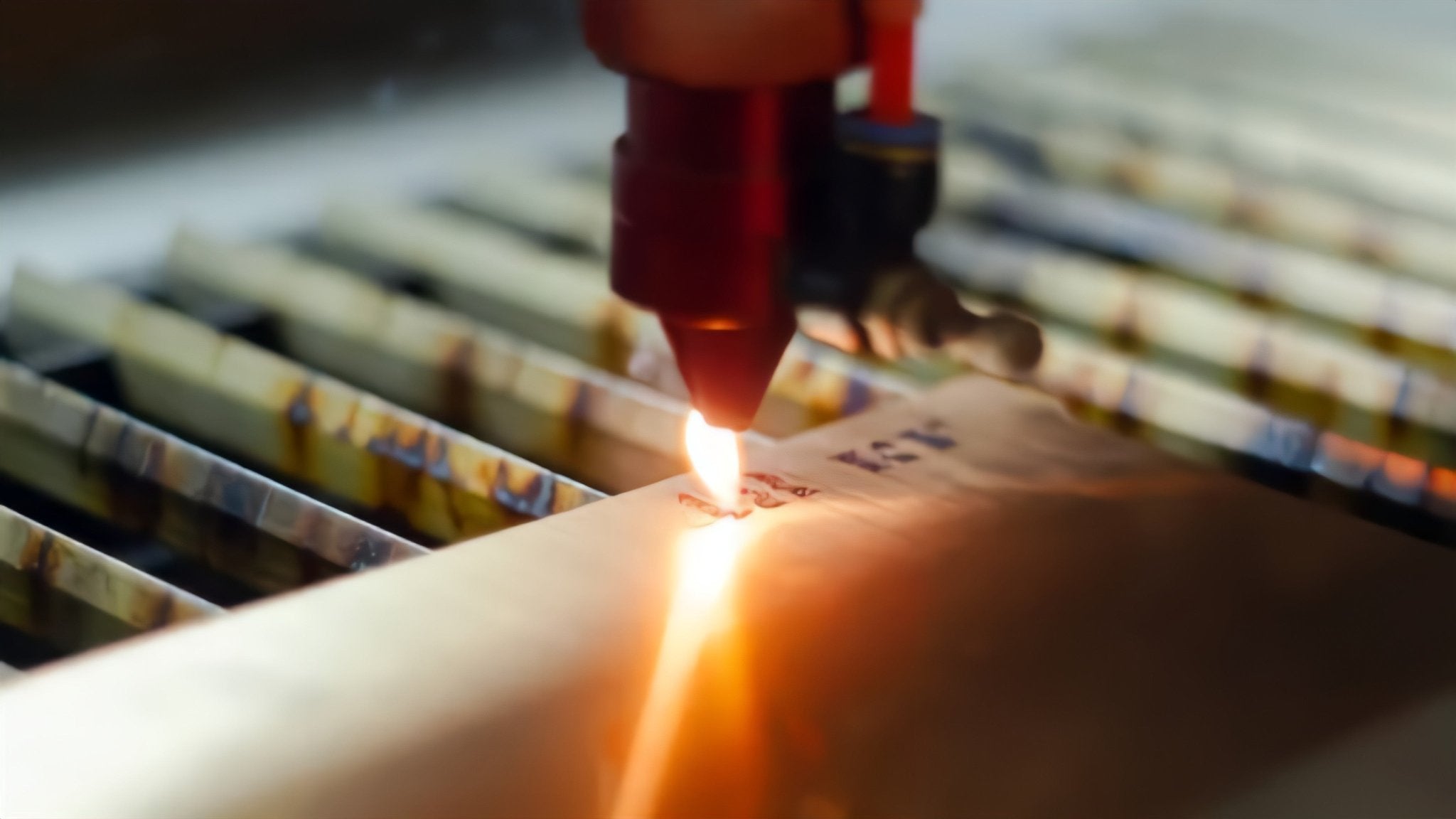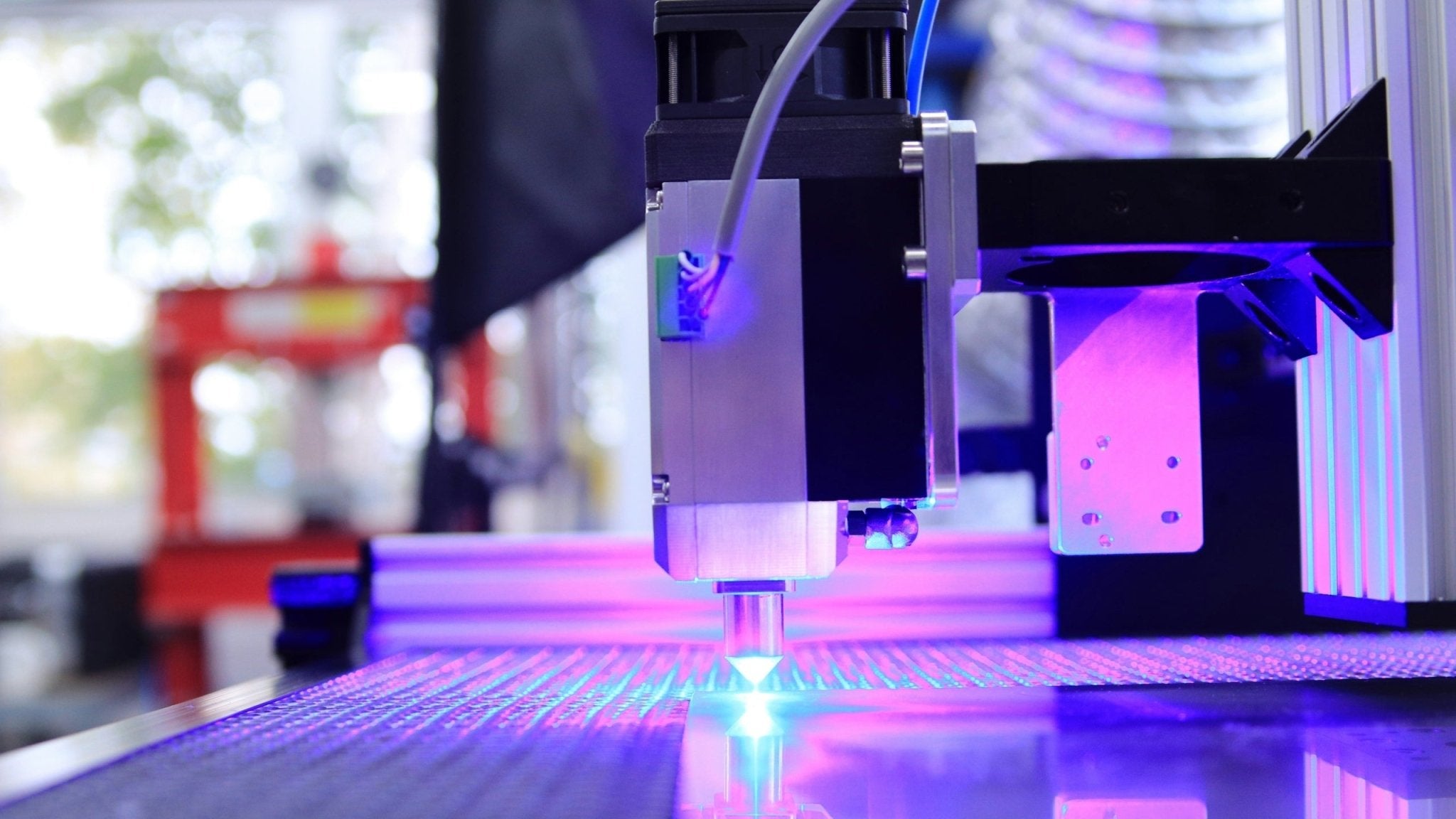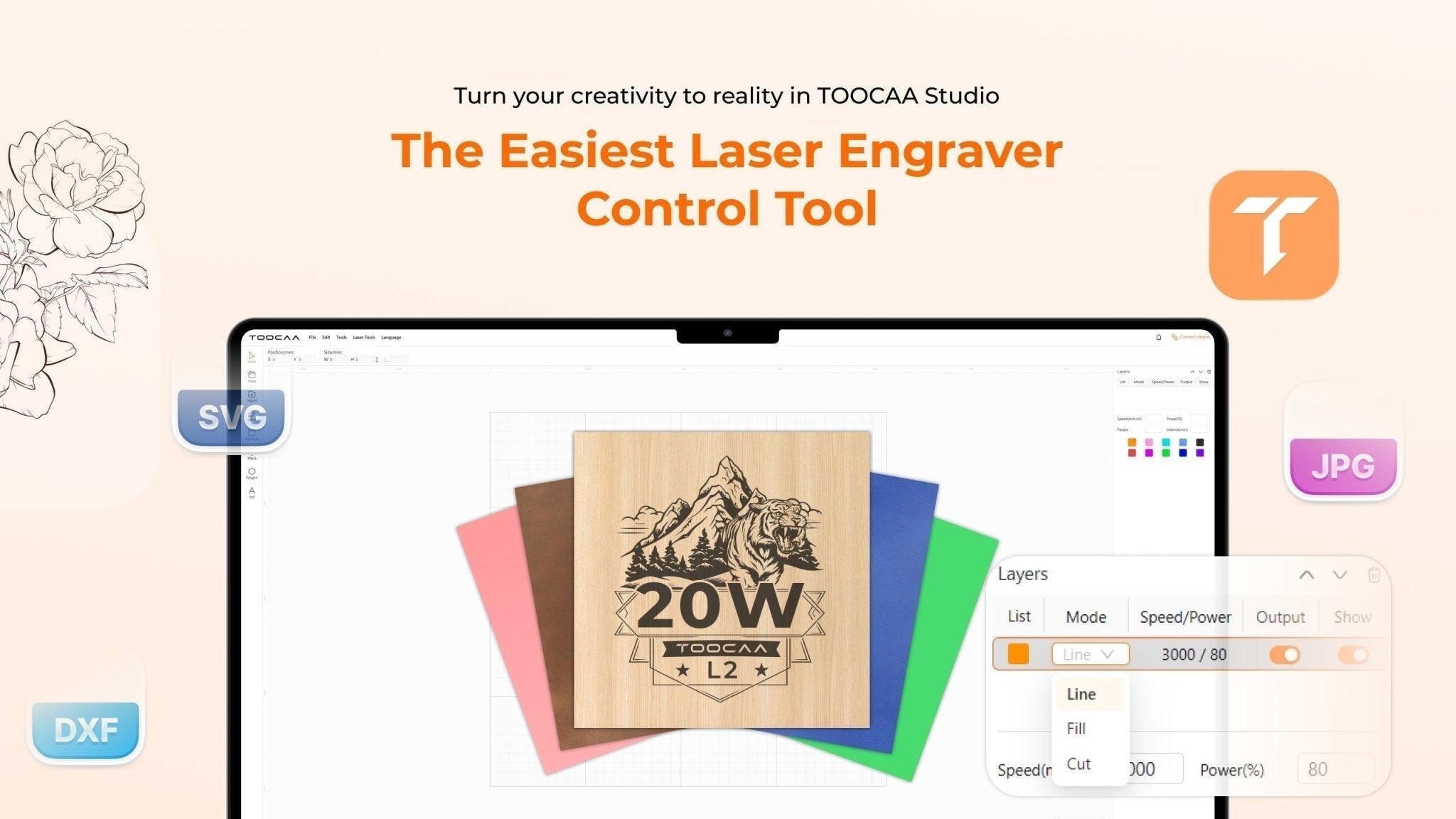A laser engraver is a great solution to permanently mark metal parts with barcodes, labels, 2D codes, serial numbers, logos, and drawings.
While fiber lasers, CO2 lasers, and diode lasers can all be used to engrave metal, the kind of laser engraver you need depends on how you want to use it.
If it is for a production line, you probably need a fiber laser. If it is for a small business or for DIY projects, a CO2 or diode laser may be sufficient.
Types of Lasers to Engrave Metal
While fiber lasers are ideal for metal engraving, CO2 lasers and diode lasers can also be used to create markings on metal. Let’s look at how each type of metal engraver works and their price range.
Fiber Laser Engravers
Fiber lasers are the best laser engravers for metal because of their speed, precision, and efficiency. The laser source is doped with ytterbium (Yb), which allows the laser to generate a wavelength of ≈1,064 nm that reacts well with metals. Ytterbium-doped fiber lasers can engrave all types of metals, including aluminum, steel, stainless steel, anodized aluminum, magnesium, lead, zinc, and copper.
Fiber lasers can be adapted to different engraving needs, offering three processes to permanently mark metals:
-
Laser etching produces high-contrast black and white marks at high speed. The different colors are achieved by modifying the surface microstructure. White is the result of diffuse reflections, and black is the result of trapped light.
-
Laser engraving creates deep, durable marks by vaporizing material layers from the surface. The resulting marks can withstand abrasion and various post treatments.
-
Laser annealing generates black marks under the surface, which preserves the material’s surface properties like corrosion resistance. It does so by slowly heating iron-based metals (such as steel and stainless steel) with a laser beam. As the metal is heated, oxygen is diffused beneath the surface, leading to internal oxidation.
These three processes can be performed with the same laser by adjusting the laser parameters and lens configuration. Fiber lasers are more expensive than other types of lasers and are better adapted for industrial applications. Industrial laser marking machines start at $120,000, and desktop lasers range from $5,000 to $25,000.
Fiber lasers can also be used to engrave some non-metallic surfaces, including plastics and rubber.
CO2 Laser Engravers
CO2 lasers are not ideal to engrave metal. This is because their wavelength (≈10.6 µm) is not absorbed efficiently by metal surfaces. Only a low percentage of the laser’s energy is absorbed, making laser ablation on metal surfaces impossible.
While CO2 lasers cannot engrave metals, they can be used to create markings using one of two methods:
-
Coating removal: CO2 lasers can engrave coated metal products by selectively removing (or burning off) the coating, revealing the bare metal. Examples include anodized aluminum and powder coated stainless steel. With this method, the metal itself is not engraved. The marking is created by the contrast between the coating and the bare metal.
-
Bonding: CO2 lasers can use a marking spray (such as CerMark) to engrave metals. The spray will bond to the surface through a chemical reaction with the laser beam. The rest of the spray that is not bonded will need to be removed manually. The result is a clear black mark that contrasts well with the bare metal surface.
CO2 lasers are also used to engrave non-metallic surfaces, such as wood, acrylics, silicone, leather, and vinyl.
Diode Laser Engravers
Diode lasers can be used to engrave metals if the engraving needs are relatively simple and low power. These entry-level laser systems are more affordable than other types of lasers (some are available for a few hundred dollars), but they have limited power output and lower beam quality.
With diode lasers, the wavelength is determined by the energy bandgap of the semiconductor material (i.e., the energy difference between two electronic bands). While they are available in a variety of wavelengths, the ideal wavelength to engrave metal materials is 1,064 nm.
Here’s what’s possible depending on the diode’s wavelength:
-
Direct Marking: With the 1,064 nm wavelength, diode lasers engrave metal surfaces much like fiber lasers. However, engraving applications are limited due to their lower output power and precision.
-
Bonding: With other wavelengths (such as blue laser diodes between 400 and 500 nm), you typically need a marking spray to create a mark on metal (as with CO2 laser engravers).
To achieve greater precision, some diode lasers are coupled into an optical fiber. These lasers are called fiber-coupled diode lasers. Fiber coupling allows the laser light generated by the diode lasers to be delivered into the optical fiber, which offers a better laser beam quality.
11 Factors that Affect the Cost of a Laser Metal Engraver
The cost of a laser engraving machine can range from a few hundred dollars to half-a-million dollars. Here are the factors that affect their cost. They will help you understand why it may be worth it (or not) to pay more for a laser.
-
Laser Technology: Fiber lasers come at a higher price but have better precision, engraving speed, control, and lifetime. They also require less maintenance and consume less energy. CO2 lasers come second in terms of cost. However, it’s worth noting that their operating and maintenance costs are higher. Diode lasers are the least expensive.
-
Laser Power: Laser power is one of the most important factors that affect price. Higher power lasers can engrave metal surfaces faster but come at a higher price. In production lines, higher power lasers are needed to prevent bottlenecks and keep up with short cycle times.
-
Safety Features: Any laser that can engrave metal has the potential to cause eye injuries, skin burns, and fires. Dust and fumes generated during metal engraving can also be dangerous for operators. Some lasers include safety features such as class-1 enclosures and dust extractors that add to the laser’s cost but ensure safety. Other lasers like tabletop and handheld lasers offer little or no protection at all. Safety features increase cost but eliminate the need for safety training and protective equipment.
-
Cooling Features: Lasers generate heat and must be cooled to prevent overheating. Different lasers come with different qualities of cooling components (fans, heat sinks, water chillers, etc.) Cheaper lasers may not have integrated cooling, which limits their utilization time.
-
Optical Components: The quality of optical components plays a crucial role in determining the performance of the laser engraving process. It affects factors such as the beam quality, focus precision, components’ durability, heat management, and speed. If speed, repeatability, and minimal maintenance are important to you, high-quality components are essential.
-
Automation and Motorization: Some lasers are available as turnkey solutions for production lines. They include features like automated doors, rotary tables, and robot compatibility.
-
Engraving Area: The size of the engraving area (as well as the orientation of the surface to engrave) can dictate which projects are possible. Some lasers can perform laser engraving within a larger work area because they are installed on a CNC, a gantry system, or mounted on a robot arm.
-
User Interface: It’s easy to forget about the user interface when buying a laser, but a well-designed and easy-to-use interface can make the difference between a laser you like and one you hate. This is especially important for DIY enthusiasts and hobbyists who want to program or adjust their own laser processes without being laser experts.
-
Communication: If you are running a production line, the ease-of-integration of the laser with your control systems is essential. Communication protocols must be compatible so that the laser system can receive the marking information from the production line controls. The production line PLC must also receive the marking status and confirmation that the marking process has been completed by the laser system.
-
Robustness: Industrial-grade components are essential to prevent downtime in high-pace production environments, especially in harsh environments like smelting and casting plants.
-
Quality Control: Vision systems or barcode readers can verify that marking is performed and meets specification requirements.
